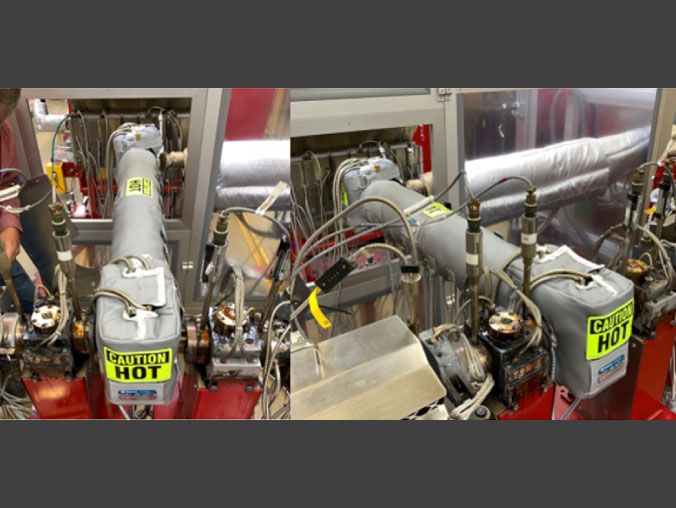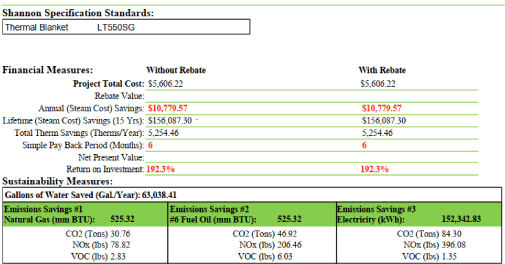Call insulation a diamond in the rough, low-hanging fruit, or a simple solution to a burgeoning energy crisis. Whatever you call it, insulation spells sustainability
Finding a reason for a plastics industry professional to insulate isn’t hard to do. Driving the decision to insulate simply takes math and common sense. The chemical makeup of a plastic determines its melting point. For example, PVC melts at between 160 to 210 degrees Celsius (320 to 410 degrees Fahrenheit). Different types of HDPE have a melting point from 210 to 270 C (410 to 518 F). The example below comes from a multiphase project Shannon Global Energy Solutions completed; the application’s operating temperature is 249 C (480 F).
The plastic extrusion market begs for efficiencies to combat utility costs, with the current wave of rising, unpredictable demand for electricity. According to the U.S. Energy Information Administration’s website’s “Today in Energy” section, in 2021, the average nominal retail electricity price paid by U.S. residential electric customers rose at the fastest rate since 2008, increasing 4.3% from 2020 to 13.72 cents per kilowatthour (kWh). Through 2022, economists expect a rise, on average, of 3.9% to 14.26 cents per kWh. Of the energy consumed by industry, the plastics market uses 7 to 9 percent of the total.
Simply put, with increasing utility costs, “Energy Conservation Through Insulation” will make a significant impact on the plastic extrusion market by addressing radiant heat loss, saving energy, mitigating risk (e.g., burns) and lowering plant air conditioning costs by removing unwanted, unnecessary heat. If the facility is air conditioned, we can calculate the savings in RT refrigeration ton, too (1 refrigeration ton (RT) = 1 ton = 12,000 Btu/hr). So, insulating has a positive impact in many ways, not just energy savings.
Applying thermal blanket insulation to extruder barrels, blow molds and similar surfaces that generate radiant heat will make production drastically more efficient and most importantly save energy. The added benefit to this discussion of energy savings is capturing wasted energy in the form of carbon (CO2). Saving energy saves carbon. Measured in tons, it’s possible to measure simple payback, return on investment (ROI), annual savings, and lifetime savings.
This abbreviated energy survey summary shows the impact of insulation for a plastics industry application (e.g., two extruder lines, each at 480 F).
The following abbreviated energy survey summary shows the impact of insulation for a plastics industry application (e.g., two extruder lines, each at 480 F). In the summary, we convert a commercial utility rate of $0.07/kWh cost into MMbtu to calculate a savings, performance measure. The conversion is $20.52/MMbtu, a very high utility cost, compared to steam. But more importantly, at an elevated operating temperature of 480 F, a high utility cost, the savings is compelling, even with an operating hour summary of 4,380 hours annually (12 hours per day).
As mentioned above, capturing energy equates to carbon capture (i.e., sustainability).
The following chart depicting “Sustainability Measures” offers one, small example labelled “Emissions Savings #3,” which shows an annual reduction of 84.3 tons of CO2.
The key takeaway for the following summary is the lifetime savings of $156,087.30. And to further boost the savings, Shannon can identify available utility credits for a plastics industry insulation project, depending on the state and region.
Visit Shannon Global Energy Solutions’ blanket and shield specifications for added guidance when insulating your plastics industry application.



